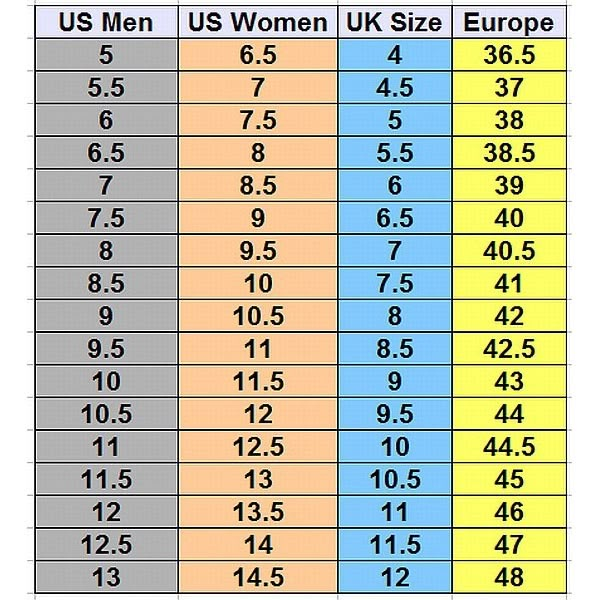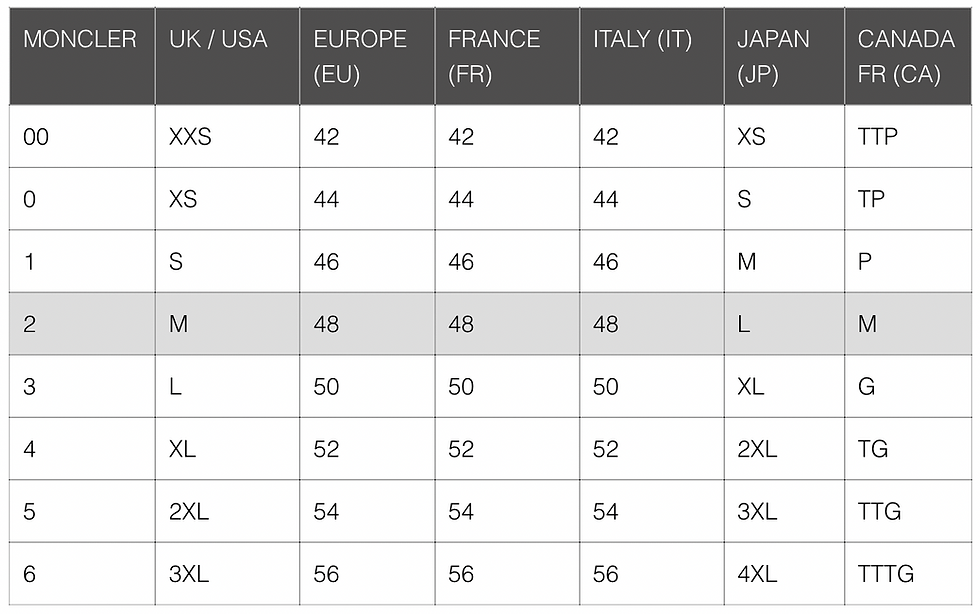Mens to Womens US Size Conversion Guide

Understanding the nuances of shoe sizing can be a daunting task, especially when navigating the complexities of men’s to women’s US size conversion. The process involves more than just a simple numerical swap, as it requires consideration of the fundamental differences in foot shape, size, and proportions between genders. This comprehensive guide aims to demystify the conversion process, providing clarity and precision for those seeking to find their perfect fit across the gender-neutral spectrum of footwear.
Introduction to Shoe Sizing
Before delving into the specifics of conversion, it’s essential to grasp the basics of shoe sizing. In the US, shoe sizes are based on the length and width of the foot. Men’s and women’s shoe sizes are not directly interchangeable due to differences in foot anatomy. Generally, men’s feet are wider and longer than women’s feet, which necessitates distinct sizing charts for each gender.
The Conversion Process
Converting men’s sizes to women’s sizes typically involves moving up or down a few sizes, but this is not a one-size-fits-all approach. A general rule of thumb is that to convert a men’s size to a women’s size, you add 1.5 to 2 sizes. For example, a men’s size 8 would correspond to a women’s size 9.5 or 10. However, this is a simplified approach and may not hold true for all brands or styles due to variations in sizing standards.
Size Conversion Chart
To facilitate a more accurate conversion, utilizing a detailed size chart is advisable. The following chart provides a general guideline for converting men’s US sizes to women’s US sizes:
| Men’s US Size | Women’s US Size |
|---|---|
| 6 | 7.5 - 8 |
| 6.5 | 8 - 8.5 |
| 7 | 8.5 - 9 |
| 7.5 | 9 - 9.5 |
| 8 | 9.5 - 10 |
| 8.5 | 10 - 10.5 |
| 9 | 10.5 - 11 |
| 9.5 | 11 - 11.5 |
| 10 | 11.5 - 12 |
| 10.5 | 12 - 12.5 |
| 11 | 12.5 - 13 |
| 11.5 | 13 - 13.5 |
| 12 | 13.5 - 14 |

Considerations for Conversion
When converting sizes, several factors must be considered to ensure the best possible fit:
Foot Shape and Width: Different brands offer varying widths, and some may cater more to specific foot shapes. Understanding your foot’s width and shape is crucial for selecting the right size, regardless of gender-specific sizing.
Brand Variability: Sizing can significantly vary between brands. What might be a perfect fit in one brand could be too small or too large in another, emphasizing the need for trying on shoes whenever possible.
Style and Type of Shoe: Different styles and types of shoes (e.g., boots, sneakers, dress shoes) may fit differently due to design, material, and construction. For instance, a sneaker might fit more comfortably in a specific size compared to a dress shoe.
Practical Application
For those looking to apply this conversion in real-world scenarios, consider the following steps:
- Measure Your Foot: Ensure you have an accurate measurement of your foot length and width to refer to during the conversion process.
- Consult the Brand: Check the sizing chart of the specific brand you’re interested in, as they may have their own conversion guidelines.
- Try Before You Buy: If possible, try on shoes before purchasing to guarantee the best fit.
- Read Reviews: Look for reviews from others who may have faced similar sizing challenges, as they can provide valuable insights into how a particular style fits.
Conclusion
The process of converting men’s to women’s US shoe sizes is multifaceted, requiring an understanding of both the theoretical aspects of shoe sizing and the practical considerations of brand variability and foot anatomy. By using the guidelines and chart provided, individuals can navigate the complexities of shoe sizing with greater ease, ultimately finding shoes that fit comfortably and support their lifestyle. Remember, the key to successful conversion lies in combining theoretical knowledge with practical application, ensuring that the journey to finding the perfect shoe is both educational and rewarding.
FAQ Section
What is the main difference between men’s and women’s shoe sizes?
+The primary difference lies in the foot’s length and width. Men’s feet tend to be longer and wider, necessitating different sizing standards for men’s and women’s shoes.
How do I convert my men’s shoe size to a women’s size?
+A general rule is to add 1.5 to 2 sizes to your men’s size to get the equivalent women’s size. However, this can vary depending on the brand and style of the shoe.
Why do different brands have different sizing?
+Brands may cater to different foot shapes, use varying materials, or design shoes with unique features, all of which can affect sizing. Additionally, manufacturing processes and intended use (e.g., athletic vs. casual) can influence sizing standards.
Is it necessary to try on shoes before buying them?
+Yes, trying on shoes is highly recommended. Even with accurate measurements and conversions, the fit can vary significantly due to the factors mentioned above. If trying on isn’t possible, reading reviews and consulting with the brand can provide helpful insights.



